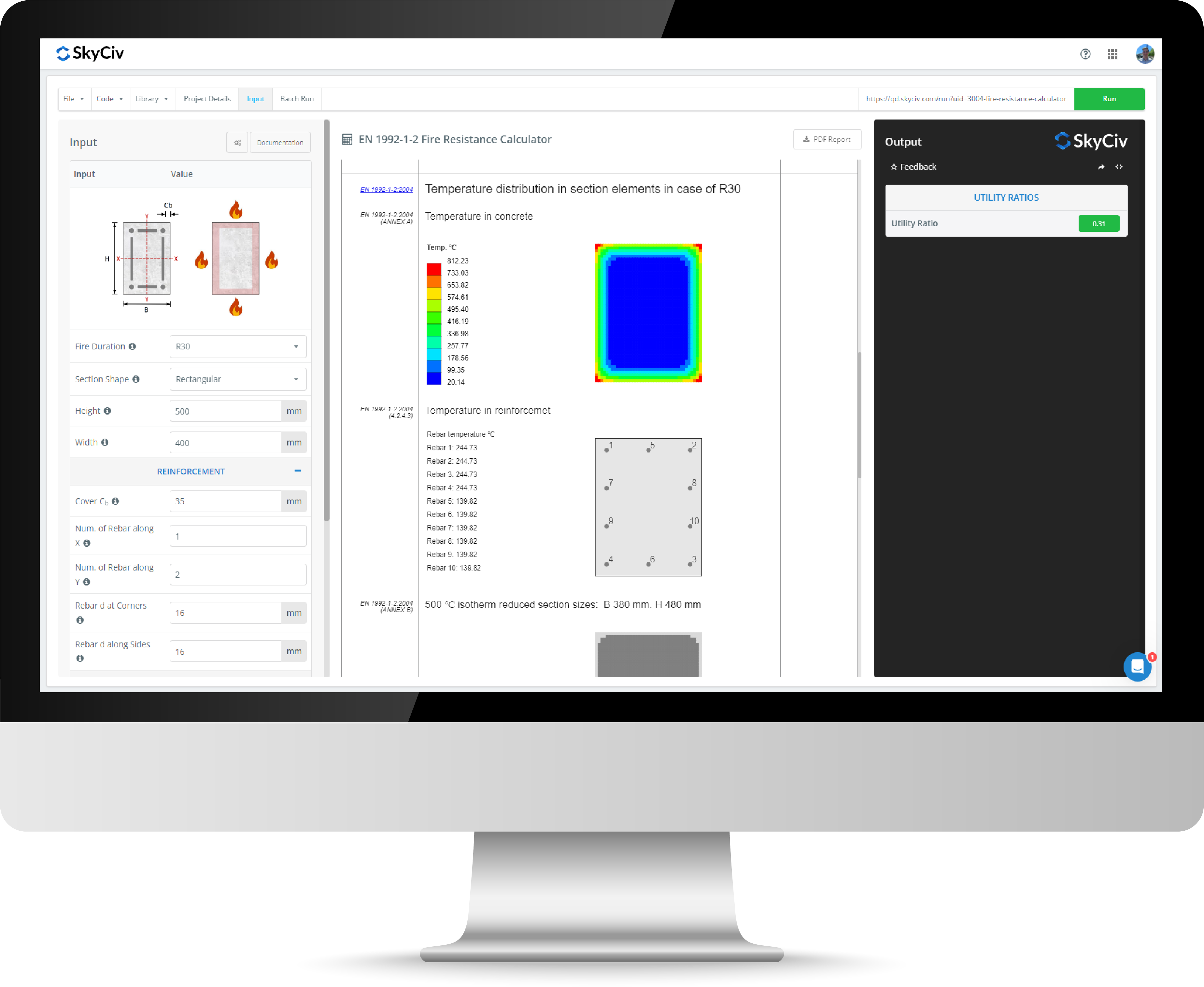Blodgett Weld Capacity Calculator
The SkyCiv Weld Capacity Calculator allows users to compute the capacity based on Blodgett’s geometry for welds treated as a line in accordance with AISC 360-16 and AS 4100:2020. The patterns available in the Blodgett Weld Capacity Calculator are based from the standard design formula that can be seen in Table 4 and 5 of the book Design of Welded Structures by Omer W. Blodgett. The weld capacity calculator will return results including the applied force on the weld, the weld capacity and the utilization ratio of the weld. Get started with the calculator below.
About the Blodgett Weld Capacity Calculator
What design methods are used in the Weld Capacity Calculator?
Both Allowable Stress Design (ASD) and Load and Resistance Factor Design (LRFD) are available in the Weld Capacity Calculator. The ASD method considers the maximum allowable stress for a welded joint based on joint type and base materials, stresses are then checked to ensure they do not exceed the allowable values. In comparison, the LRFD method does not set a fixed allowable stress value but instead involves calculating a welded joint based on factors like the weld strength, material properties, and loading.
The Australian Standard for steel (AS 4100) uses a limit state design approach. With this approach loads are factored up into design actions and then resolved into equivalent shear stresses on weld groups. The weld shear capacity is then calculated and compared to the maximum shear stress on the weld group.
How is welding length calculated?
Generally welding length is calculated by measuring the linear distance along the joint between the two members that need to be welded. Other factors also need to be considered such as the thickness and type materials being joined. The geometry of sections can also physically limit a welders ability to reach spaces and may mean that certain sides of a section can not be welded.
What is a Weld Capacity Calculator used for?
The SkyCiv Weld Capacity Calculator is useful to determine what the maximum load a joint between two members can safely be expected to stand before failing. Checking weld capacity is a key part of the engineering process to ensure that connections are structurally sound and meet design standard requirements.
The SkyCiv Blodgett Weld Capacity Calculator is useful in a range of structural engineering projects that may include building construction, bridge construction and many other infrastructure projects. Welding also has applications in automotive, aerospace, marine (shipbuilding), railway, offshore and mining engineering. Often due to the nature and safety requirements these industries have particular welding regulations that need to be followed.
When to use welds over bolts?
Welds have several advantages over bolted connections which are:
- No removal of steel material. Whereas welds only add material to the side of a member bolted connections will remove material from the steel section, reducing section capacity and introducing concentrated stress points in the member.
- Welds are stiffer than bolted connections. This can help if a structural engineer has designed a connection to be a fixed connection instead of a pin connection.
- Welded connections can provide higher strength since they provide a continuous joint. Bolted connections can have physical limitation on how many bolts can be provided due to spacing requirements and will only provide discrete points of restraint.
- Bolts extrude whereas welds can remain neat and hidden. Welds run along existing joints and are less visually intrusive than bolts which will be spread further away from the end of a beam and be less subtle than welds.
What is a weld treated as a line pattern?
A weld treated as a line pattern in a method to graphically represent weeds on engineering drawings. The above weld capacity calculator has twenty-one weld patterns available based on the Blodgett Weld Type outlined in the book Design of Welded Structures. These weld patterns represent a variety of different cross section types that are commonly found in structural members.
The AS 4100 weld capacity calculator also allows importing the dimensions of typical steel sections and editing weld patterns into custom arrangements. Calculations for custom weld patterns are resolved using the parallel axis theorem and elastic theory.
Types of welding joints
There are multiple types of welding joints available that are used in structural engineering. Some common types of joints include Butt Joints, T-Joints, Lap Joints, Corner Joints, Edge Joints, Groove Joints, Plug Welds, Filleted Joints, Spot Weld and Seam Welds.
Weld Capacity Calculator FAQs
What is Blodgett Welding?
Blodgett Welding is based on Omer W. Blodgett book Design of Welded Structures.
We can also design for custom arrangements by using the second moment area of line welds and then using the parallel axis theorem to find the result. Blodgett Welding has simplified different arrangements into a series of simple to apply formulas to reduce the amount of steps in calculations.
What weld section properties are required?
The SkyCiv Weld Capacity Calculator takes properties include the ultimate strength of the weld, the weld size and the depth of the weld.
What results are available for the Blodgett Weld Capacity Calculator?
The weld capacity calculator returns a weld capacity result as well as a utilization ratio for the welded connection. In addition to this the following results are also provided:
- Preferred Weld Size
- Member Weld Capacity
- Fillet Weld Capacity
- Maximum Effective Weld Size
- Maximum Force per Unit Weld
What weld loads are required?
The SkyCiv Weld Capacity Calculator requires the applied force along the x, y and z directions as well as the moment about the x and z axis.
What unit system is available?
Currently only the imperial unit system is available for the AISC 360-16 calculator and only the metric system is available for the AS 4100 calculator.
Related tools
Ready to upgrade? Check out our flexible plans.


